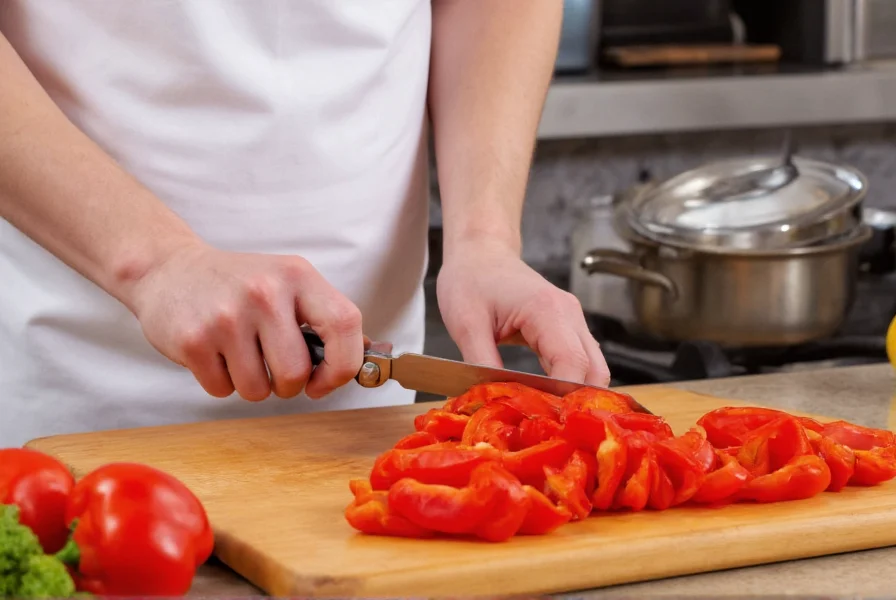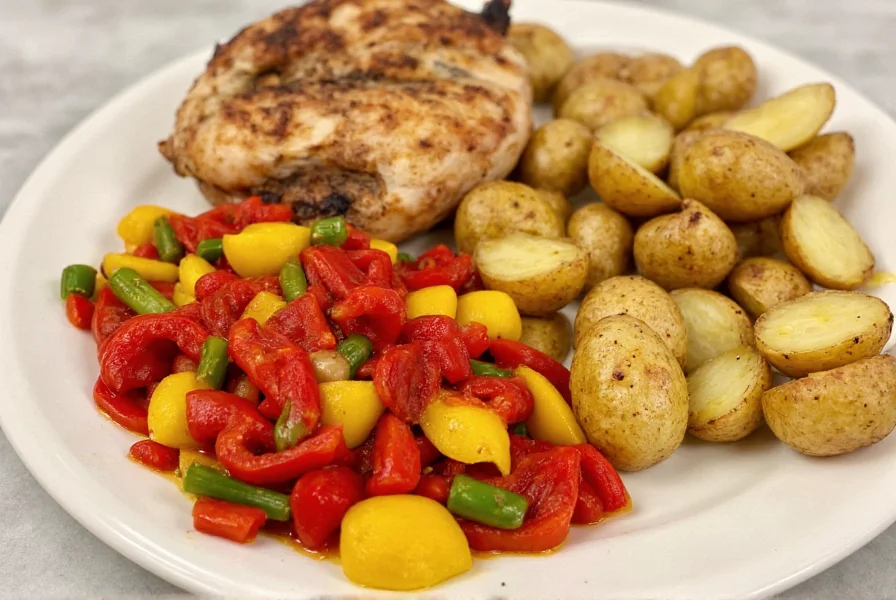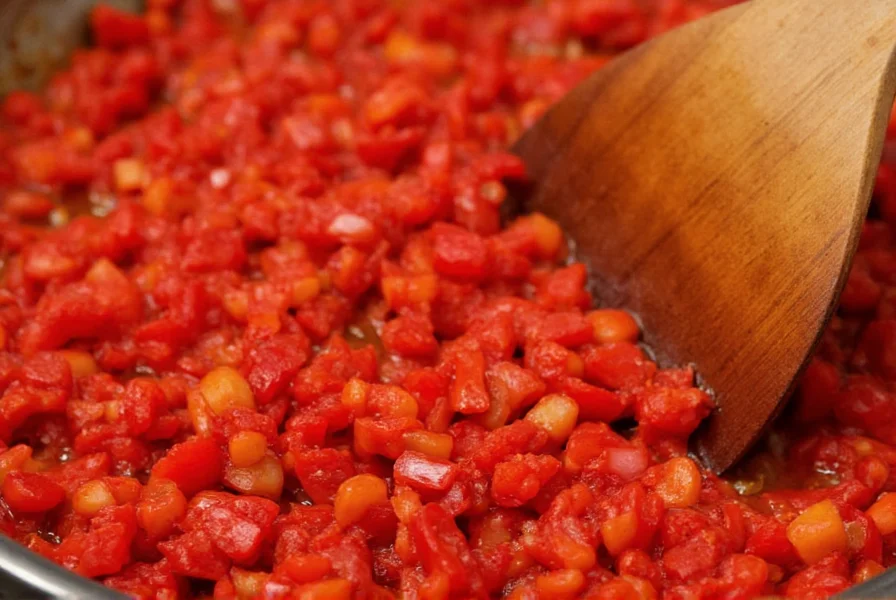Mastering the art of red pepper sauté transforms this humble vegetable into a flavor powerhouse that elevates countless meals. Unlike roasted or grilled preparations, sautéing preserves the pepper's crisp texture while enhancing its natural sweetness through controlled caramelization. This quick-cooking method works particularly well with red bell peppers, which contain higher sugar content than their green counterparts, creating beautifully caramelized edges without excessive cooking time.
Why Sauté Red Peppers Properly Matters
Correct sauté technique makes the difference between bland, soggy peppers and vibrant, flavorful components. When you learn how to sauté red peppers without burning them, you unlock complex flavor development through the Maillard reaction while preserving nutritional value. Red bell peppers contain nearly twice the vitamin C of oranges and significant vitamin A, but improper cooking can degrade these nutrients. The ideal red pepper sauté maintains 80% of these valuable compounds while developing rich, sweet flavors.

Step-by-Step Guide to Perfect Red Pepper Sauté
Follow these professional kitchen techniques for restaurant-quality results every time you prepare red pepper sauté:
Preparation Essentials
Start with firm, glossy red bell peppers free of wrinkles or soft spots. Wash thoroughly and remove seeds and white membranes, which can create bitterness during cooking. For consistent red pepper sauté cooking time, slice peppers into uniform 1/4-inch strips. This uniformity ensures even cooking—thinner pieces burn while thicker ones remain undercooked.
Equipment and Temperature Control
Use a heavy-bottomed skillet (cast iron or stainless steel) preheated to medium-high. The ideal temperature for red pepper sauté is 350-375°F (175-190°C)—hot enough for sizzle but not smoking. Add just enough high-smoke point oil (avocado, grapeseed, or light olive oil) to coat the pan bottom. Avoid overcrowding the pan, as this lowers temperature and causes steaming rather than sautéing.
| Cooking Stage | Visual Cues | Time Range | Texture Result |
|---|---|---|---|
| Initial Sizzle | Bright red color, audible sizzle | 0-2 minutes | Firm, raw texture |
| Early Caramelization | Edges turning golden | 2-4 minutes | Slightly tender |
| Optimal Stage | Even golden edges, vibrant red | 5-7 minutes | Tender-crisp perfection |
| Overcooked | Brown spots, limp appearance | 8+ minutes | Mushy, bitter |
Execution Technique
Add peppers to the hot pan in a single layer. Wait 60-90 seconds before stirring to allow initial caramelization. Use a metal spatula for frequent but not constant stirring—every 60-90 seconds—to encourage even browning. For authentic red pepper sauté flavor development, add aromatics like minced garlic during the last 2 minutes of cooking to prevent burning. Finish with a splash of acid (lemon juice or vinegar) to brighten flavors and a pinch of flaky sea salt.
Avoiding Common Red Pepper Sauté Mistakes
Many home cooks struggle with red pepper sauté due to preventable errors. Understanding how to sauté red peppers without burning them requires attention to these critical factors:
- Incorrect heat level - Too high causes burning before peppers soften; too low creates steaming instead of browning
- Overcrowded pan - Excess moisture from too many peppers lowers pan temperature significantly
- Improper slicing - Inconsistent sizes lead to uneven cooking in red pepper sauté preparation
- Early seasoning - Salt draws out moisture prematurely, hindering caramelization
- Wrong oil selection - Using low smoke point oils like extra virgin olive oil creates bitter flavors
Flavor Pairings and Culinary Applications
The sweet, slightly smoky profile of properly executed red pepper sauté complements numerous dishes. Professional chefs recommend these pairings when incorporating red pepper sauté into your cooking:
- Protein pairings - Excellent with chicken, shrimp, or steak as a side or integrated component
- Grain combinations - Mix with quinoa, farro, or rice for vibrant pilafs
- Egg dishes - Essential for frittatas, omelets, and breakfast scrambles
- Pasta integration - Toss with olive oil, garlic, and fresh basil for quick vegetarian pasta
- Sauce enhancement - Blend with tomatoes for rich pasta sauces or pizza toppings

Storage and Reheating Best Practices
Properly stored sautéed red peppers maintain quality for future use. Cool completely before transferring to airtight containers. Refrigerated red pepper sauté stays fresh for 3-4 days. For longer storage, freeze in single-serving portions for up to 3 months. When reheating, use a hot skillet rather than microwave to restore texture—the microwave makes peppers soggy, while the skillet revives caramelized flavors. Add a teaspoon of water during reheating to create steam that revitalizes the peppers without drying them out.
Regional Variations Worth Trying
Chefs worldwide have developed distinctive approaches to red pepper sauté that offer unique flavor profiles:
- Spanish Pimientos de Padrón style - Sear at extremely high heat with coarse sea salt
- Italian Peperonata - Slow-cooked with onions, tomatoes, and herbs for stewed preparation
- Mediterranean version - Finished with capers, olives, and oregano for briny complexity
- Asian-inspired - Tossed with ginger, soy sauce, and sesame oil for umami depth
Frequently Asked Questions
How long should I sauté red peppers for optimal texture?
For perfect tender-crisp texture, sauté red peppers for 5-8 minutes over medium-high heat. Start checking at 5 minutes—they're done when vibrant red with golden brown edges but still hold their shape. Overcooking beyond 10 minutes makes peppers mushy and diminishes their sweet flavor profile.
What's the best oil for red pepper sauté to prevent burning?
Use high smoke point oils like avocado oil (smoke point 520°F/270°C), grapeseed oil (420°F/215°C), or light refined olive oil (465°F/240°C). Avoid extra virgin olive oil and butter for initial cooking as they burn below ideal sauté temperatures. You can add a small amount of butter during the last minute for flavor enhancement.
Can I add other vegetables when sautéing red peppers?
Yes, but add vegetables according to their density and water content. Start with onions or shallots, then add denser vegetables like zucchini or mushrooms, and finish with delicate greens. For mixed vegetable sauté, cook red peppers separately first since they require less time than harder vegetables but more than leafy greens.
Why do my sautéed red peppers turn out soggy instead of crisp?
Soggy peppers usually result from overcrowding the pan or using too low heat. When too many peppers crowd the skillet, they release moisture that steams rather than sautés them. Always cook in batches if necessary, and maintain medium-high heat (350-375°F) to ensure proper evaporation of moisture while encouraging caramelization.
Should I remove the skin from red peppers before sautéing?
No, the skin contains valuable nutrients and texture. Unlike some cooking methods, sautéing benefits from leaving the skin intact as it helps maintain the pepper's structure during cooking. The skin softens pleasantly during the sauté process without becoming tough or unpleasant to eat.











 浙公网安备
33010002000092号
浙公网安备
33010002000092号 浙B2-20120091-4
浙B2-20120091-4